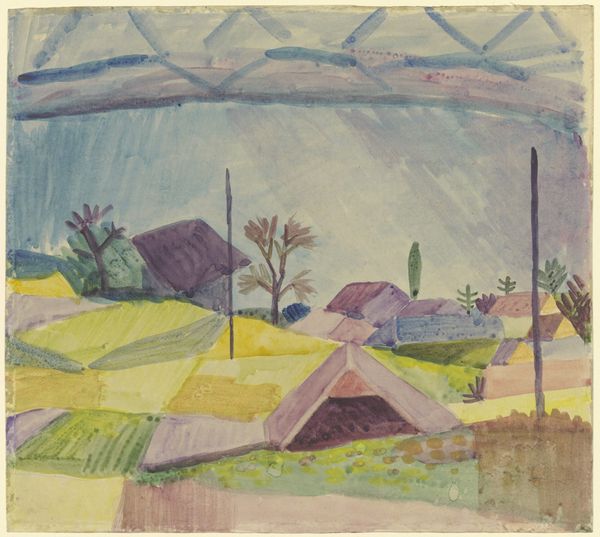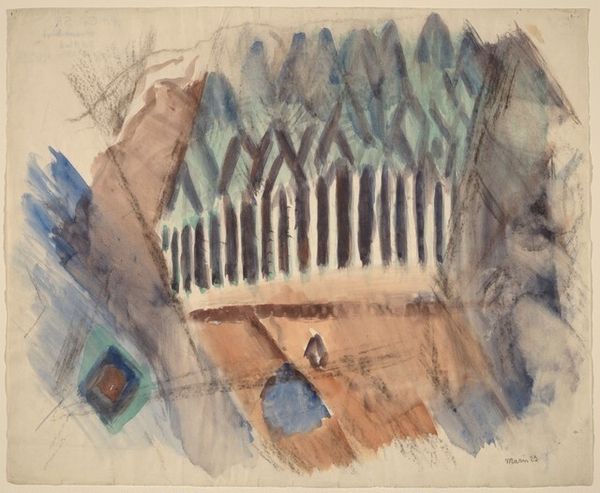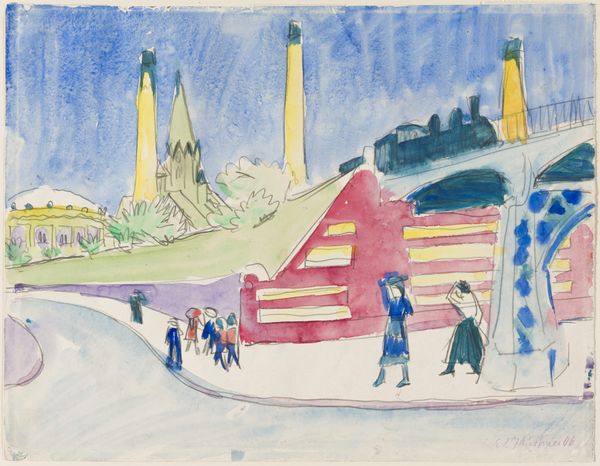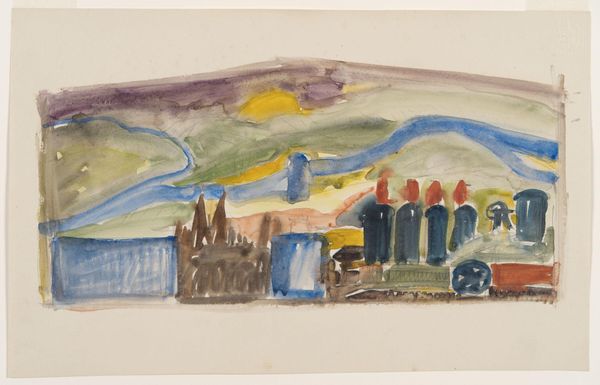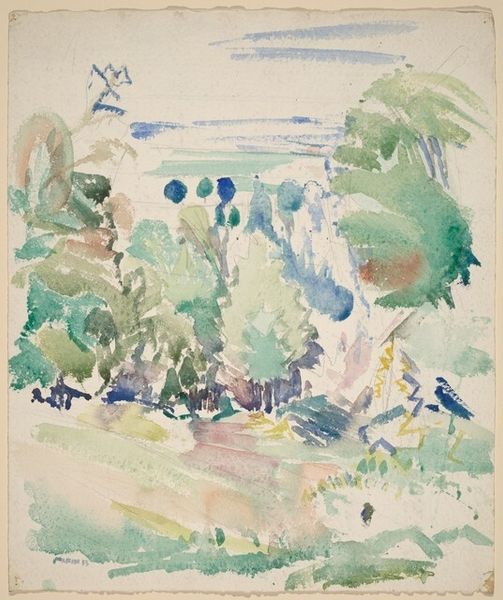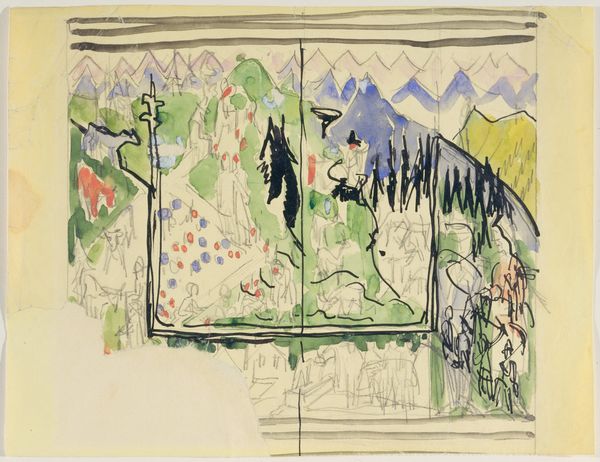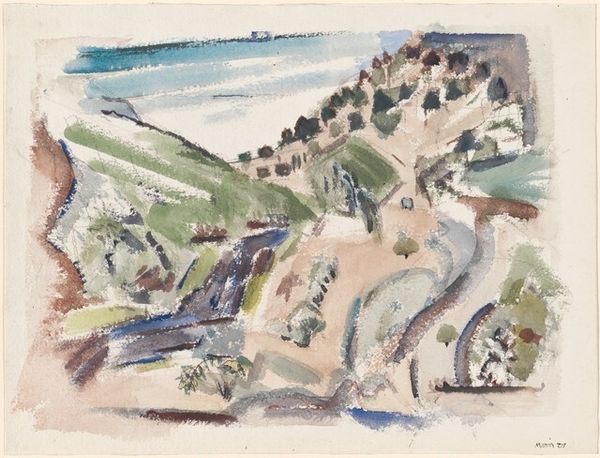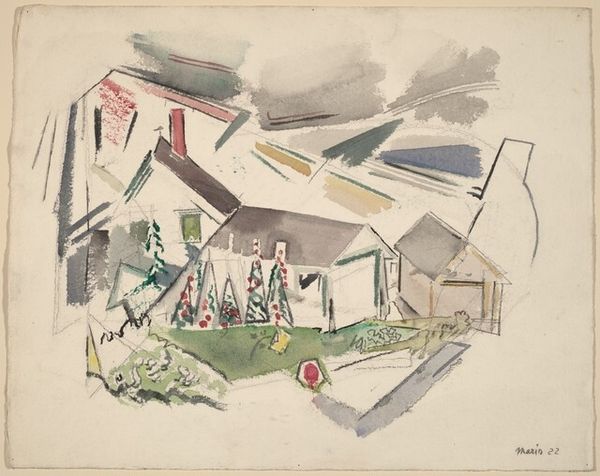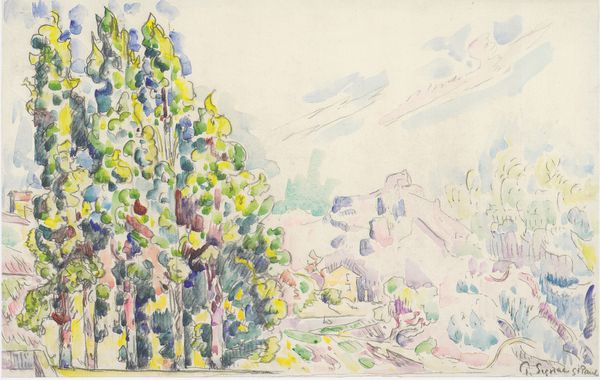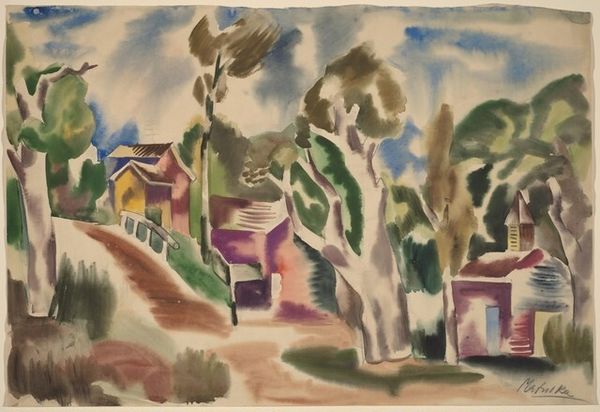
watercolor
#
water colours
#
landscape
#
form
#
watercolor
#
geometric
#
abstraction
#
modernism
#
watercolor
Copyright: Kmetty János,Fair Use
Curator: We're looking at János Kmetty's "Landscape" from 1940, rendered in watercolor. Editor: It has this sort of serene, almost dreamy quality to it, despite the obvious geometric forms. There's a muted, pastel palette that’s rather calming. Curator: Kmetty was quite interested in form, particularly the intersection of geometric abstraction and representational landscape painting. Notice how the artist constructs the landscape through simplified planes and color blocks. The clear formal language is key. Editor: True, but even with those formal qualities, I can't ignore the sociopolitical landscape of 1940. This painting was created during the rise of Fascism in Europe. Could this serene, almost idealized landscape be interpreted as a response to the turmoil, perhaps even a form of resistance? An imagined space, separate from conflict? Curator: It’s tempting to bring in that context, but the artist’s engagement seems more concerned with the visual and intellectual challenge of reconstructing space itself. Observe how Kmetty flattens the pictorial plane while still conveying depth. See how he disrupts conventional perspective using color. Editor: But aren't those formal choices themselves telling? The flattening of the space, the muted tones—doesn’t that speak to a kind of detachment, a looking away? Even abstraction has social meaning. Curator: Perhaps. Or perhaps it's about establishing a formal autonomy for painting, pulling it away from direct representation and towards a more self-referential mode of expression. The geometry imposes an order. Editor: And who benefits from order, and at what cost? Art exists within power structures. Curator: But isn’t reducing the art to its political subtext ignoring the sophisticated visual discourse Kmetty creates? Editor: Not at all, I think that enriching our view to understand Kmetty is creating an alternate vocabulary of space and freedom under the crush of external terror. It enhances, rather than diminishes, its complexity. Curator: A perspective I respect, even if I maintain that, formally, it is also a highly successful exploration of pictorial structure. Editor: And I’d say, either way, it's a beautiful articulation of seeing and being, both then and now.
Comments
No comments
Be the first to comment and join the conversation on the ultimate creative platform.
